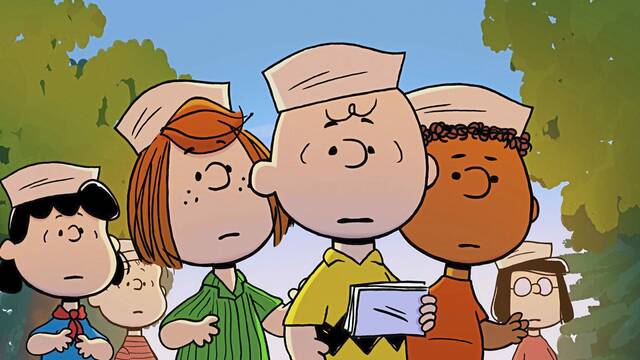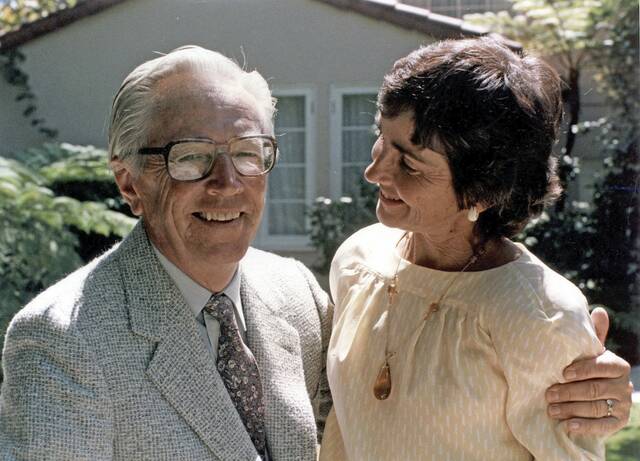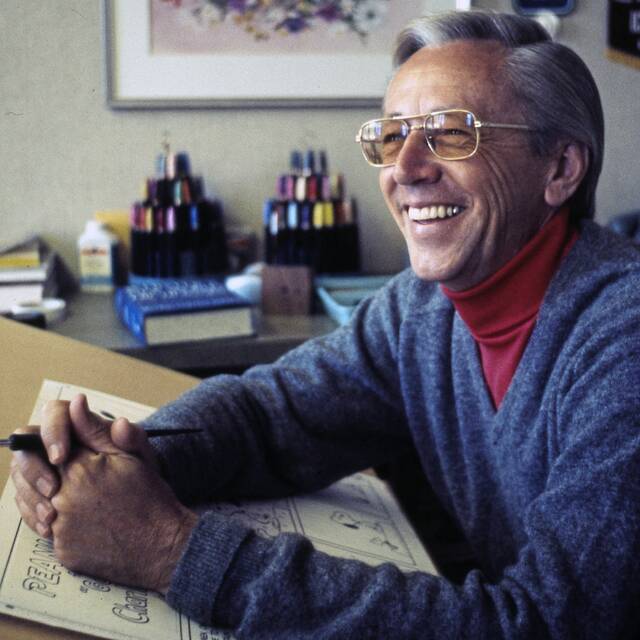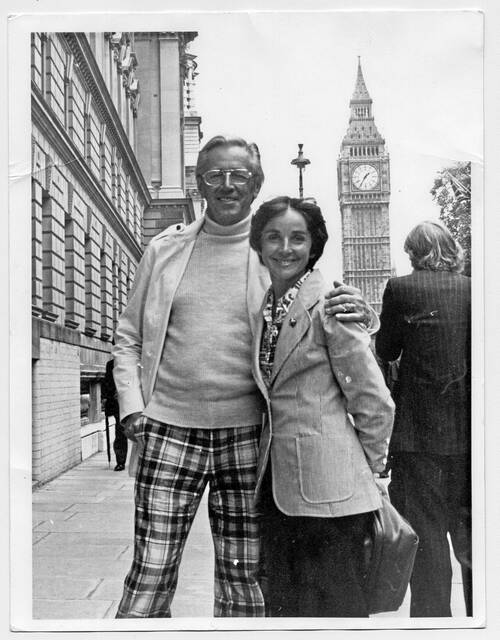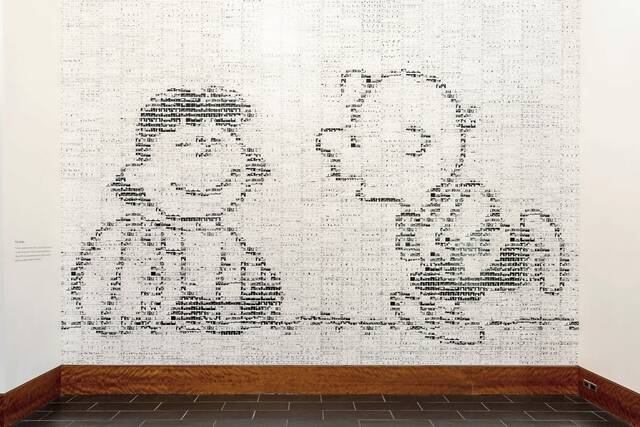As Peanuts turns 75, Charles Schulz's comic is more poignant than ever
SANTA ROSA, Calif. − Jeannie Schulz has a wicked sense of humor.
The 86-year-old widow of Charles Schulz, creator of Snoopy, Charlie Brown and the rest of the not-so-merry Peanuts gang, has become the conservator of his legacy.
Schulz is among the owners of Peanuts Worldwide, through which all partnerships flow − from Snoopy-stamped Uniqlo T-shirts to a new Apple TV+ special. She sits down with USA Today in an office at her husband’s eponymous museum, filled to the brim with Peanuts paraphernalia.
A life-size Snoopy kicks back in the swivel chair behind her desk in the den once occupied by Charles, affectionately known as Sparky. She’s gearing up for the strip’s 75th anniversary on Oct. 2, and when asked about the enormity of the preparations, she offers, wryly: “What else was I going to do? Go play bridge and golf every day?”
Peppered throughout the conversation is that same sharp wit, which evokes her husband, whose cartoons, imbued with a similar tone, enjoy a rarified cultural space.
As streaming platforms bloat with endless offerings and attention spans shrink, the likelihood that anything will stick seems increasingly atypical. Perhaps that’s why the staying power of Peanuts is so refreshing.
Unlike plenty of entertainment, which can become stale or, worse, offensive with age, the strip’s salience has remained, and it’s found a loyal band of followers in Gen Z. Their attachment to Snoopy, the multi-personality beagle who goes where the human characters cannot, is particularly strong.
Online, Snoopy is memetic gold, charming users in his big puffer coat, his easily readable, yet wordless emotions making him the ultimate #relatable #king.
“I watch people go through the museum and I wish I could know what’s in their heads,” Jeannie says, remarking on tattooed 20-somethings who, alongside wide-eyed toddlers, walk the corridors adorned with original sketches and artifacts from Schulz’s life.
The museum sits just off the downtown area of Santa Rosa. The smallish city in California (population 178,000), where Schulz lived from the late 1960s to his death in 2000, has become a living monument to his work.
The streets are dotted with statues of the Peanuts gang, painted differently for the businesses they guard. The airport is named after him, as is the ice rink, where you can toast your buns at the Warm Puppy Cafe after getting in a good skate.
And the strips, of which there are nearly 18,000, make up a large mural inside the museum walls, playing out the small dramas of quotidian life: an unrequited crush, the droning voice of a teacher and, famously, a missed football punt.
Peanuts boasts celebrity fans, from NASA to Hollywood
“To me, it was the way life was supposed to be,” says astronaut Mike Massimino, who took his treasured childhood Snoopy plush toy to space.
A self-described “space nut,” Massimino’s path to NASA was circuitous, but when the engines finally revved for his first trip to the great beyond, he had his trusted Snoopy in tow. Peanuts, he says, is like baseball and the space program, an indelible symbol of the American ideal.
“When you go to space, it’s somewhat of an emotional thing,” he says. “For me, it was like this little boy dream.” To pay tribute, he brought the stuffed pup, whom he “used to dream with and play with and imagine going to the moon.” It didn’t hurt, of course, that a pilot was among many alter egos Schulz sketched for the dog.
Andy Cohen, the sharp-tongued host of “Watch What Happens Live,” also claims a close attachment to his childhood stuffed Snoopy. Though it’s “hanging by a thread,” it sits on a shelf still, he says, revealing that his close friend Anderson Cooper has the same doll (in the same dilapidated condition).
“It’s universal,” Cohen says of Peanuts. “You think it’s about kids, but it’s really about life. Charles Schulz, he was an analytical guy; there were a lot of big life lessons wrapped up in what he was doing, and I think those never get old or tired.”
Schulz was driven by a sense of perfectionism, Jeannie says, explaining that every panel had to stand on its own.
“He used to say every panel has to be pleasing, it has to have the right perspective,” she says. His genius was in the subtlety, a proportion just slightly askew, a sense of humor that was “not recycled,” she adds.
She shares a joke Schulz once played on Lee Mendelson, producer of the Charlie Brown holiday specials, who was perpetually on the phone. He called Mendelson to recommend Leo Tolstoy’s “War and Peace,” then began reading the comically large book until the answering machine cut off, phoning back again and again to leave more messages.
The anecdote crystallizes Schulz’s tact for situational comedy. He drew upon universal concepts of funniness, then colored them in with brilliant detail. The classic slapstick comedy of Charlie Brown missing the football is made funnier because it’s a repeated bit, and because Lucy is such a know-it-all. Like any great artist, Schulz knew his work’s impact had to be both immediate and sustained, the humor deepening the longer you look at it.
“He was always thinking about the strip,” Schulz says, describing how, when they attended symphony concerts, he would carry a pad in his pocket, jotting down notes and running ideas by her on the drive back. “He said that he always traced things in his mind.”
That mental tick is evident in the strip’s striking ability to show movement despite its stillness − clouds of dust effectively signaling a fall, or small strokes around a character’s feet making them dance.
Peanuts offers glimpse into inner workings of Charles Schulz’s brain
He used to say that “painters have the impetus to take their easel and tromp out somewhere and paint a tree,” Jeannie says. “And he actually kept the curtains closed and didn’t do that because I think that his painting, his drawing was more in his brain.”
Viewed through that lens, the Peanuts universe is a character study of Schulz himself.
“He was very internal, but I think he suffered a lot, emotionally,” says Billie Jean King, a devout admirer and close friend. She recalls him as “very shy,” so much so that if he wanted to get her attention, he would write her name into the strip, rather than call her up.
“He was always thinking about the world around him,” she says.
After requesting to see him work, King once ventured into his studio to watch him sketch the characters that had grounded her youth. He told her, she says, that he needed to be able to draw a human body correctly before being able to manipulate it.
“Why is he able to do what he does? It’s because he could do the other,” King explains. “It was very precise and very strict and disciplined, and yet you don’t get the feeling of that … how much work went behind all these things he did.”
He always wanted his strip to be the best one on the page, Jeannie says, describing him as eternally curious.
He read a lot of biographies, she says, “because he was thinking, ‘Do these people who have created great works … do they have any of the same worries and fears that I have?’ “
If legacy had been among those fears, he needn’t have worried. Charlie Brown, melancholic as he is, looks to be a sprightly 75, ringing in the anniversary as popular now as he’s ever been. Peanuts Worldwide has helped keep Schulz’s beloved characters front of mind, splashing them everywhere from Timex watches to Clue boards.
“We try to keep true to what Sparky created,” says Melissa Menta, a key player in the brand’s global presence. “Even though it does feel like Peanuts is everywhere … we’re also pushing our partners not to just slap a Snoopy onto a T-shirt without a story behind it.” In other words, no need to keep an eye out for the Crumbl Cookie x Woodstock collab anytime soon.
Alec Baldwin, the ‘Great Houndini’ and a sense of subtle humor
“I always love when people don’t push too much,” says Alec Baldwin, who is particularly fond of the Great Houndini, Snoopy’s magician alter ego. “I think of Charlie Brown as the Bob Newhart of cartoon characters. It’s dry. It’s real.”
“Not everything has to be back-slappingly funny, you know,” he adds. “His sense of humor was a given, but his sense of characters and subtlety was so immense.”
That the characters weren’t overwritten has remained the strip’s charm. A common thread among its celebrity fans was the universality of the emotions it laid bare.
“The things that stick stay true to some essential thing,” Baldwin says. “It’s loose enough, it’s plain enough, you can put on it what you want, you can assign to them certain characteristics you want to assign to yourself.”
King feels much the same. “It’s the emotions of the characters,” she says. “You feel whatever they’re feeling.”
As Jeannie readies to say goodbye, coffee drained from her Snoopy-embossed mug, she offers yet another glimpse of that signature Schulz humor.
Asked what she might tell a younger version of herself about life, she responds with a twinkle in her eye: “Don’t expect too much.” Matter-of-fact, no frills, but funny in a way that’s hard to put your finger on − it’s exactly what Charlie Brown would say.
Remove the ads from your TribLIVE reading experience but still support the journalists who create the content with TribLIVE Ad-Free.

